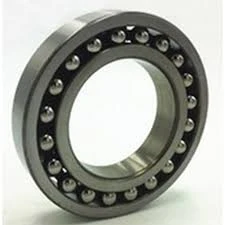
Oct . 10, 2024 15:54 Back to list
ukuran tapered roller bearing
Understanding Tapered Roller Bearings Importance and Specifications
Tapered roller bearings are essential components in various industrial applications and machinery, offering excellent load-bearing capacity and durability. Their design facilitates the handling of both radial and axial loads, making them a popular choice in automotive, aerospace, and manufacturing applications. This article will explore the significance, design features, measurements, and selection considerations for tapered roller bearings.
What Are Tapered Roller Bearings?
Tapered roller bearings comprise inner and outer rings with tapered raceways, rollers, and a cage. The tapered design of the rollers allows for efficient handling of combined loads, thereby ensuring longer life spans and reduced maintenance needs. The contact angle of the rollers ensures that the load is distributed evenly, providing stability and minimizing wear.
Key Features of Tapered Roller Bearings
1. Load Handling Tapered roller bearings are designed to support both axial and radial loads, making them suitable for various applications where these forces act simultaneously.
2. Stability The design promotes high stability even at elevated speeds. This stability reduces vibration and increases the overall efficiency of the machinery.
3. Adjustability These bearings offer adjustability for preload conditions, allowing for fine-tuning to improve performance and extend service life.
Size and Specifications
Tapered roller bearings come in various sizes and specifications, making it crucial to select the correct size for the intended application. The size is typically denoted by a series of numerical codes indicating the dimensions of the inner and outer diameters, width, and taper angle.
ukuran tapered roller bearing

The most common dimensions to consider include
- Outer Diameter (OD) This is the total external diameter of the bearing. - Inner Diameter (ID) The diameter of the hole through the center of the bearing, where the shaft will be positioned. - Width (W) The width of the bearing which affects its load-carrying capacity. - Cone and Cup Designations Tapered roller bearings are often referred to by their cone (inner ring) and cup (outer ring) designations, which help in identifying suitable replacements or new bearings in applications.
Selecting the Right Tapered Roller Bearing
When choosing a tapered roller bearing, several factors must be taken into account
1. Load Requirements Consider the radial and axial loads the bearing will endure. The basic static load rating and the dynamic load rating will provide insights into the bearing’s effectiveness in handling these loads.
2. Operating Conditions Factors such as temperature, environment (presence of dirt or moisture), and speed play significant roles in the bearing's performance. Ensure the selected bearing is suited for the operational conditions it will face.
3. Lubrication Proper lubrication is crucial for the longevity and functional effectiveness of tapered roller bearings. Depending on the application, different lubricants (grease or oil) may be recommended.
4. Alignment The alignment of the bearing within the assembly impacts performance. Improper alignment can lead to premature failure, so it’s essential to ensure that the installation meets specified tolerances.
5. Brand and Quality Investing in high-quality bearings from reputable manufacturers can save costs associated with frequent replacements and machine downtime.
Conclusion
In conclusion, tapered roller bearings are integral to many mechanical systems due to their unique ability to manage multiple load types effectively. Understanding their specifications and features is vital for selecting the right bearing for any application. By considering factors such as load ratings, operating conditions, and quality, engineers and technicians can ensure optimal performance and longevity of machinery reliant on these critical components. As the industry continues to evolve, innovations in bearing technology and materials will likely enhance the capabilities of tapered roller bearings, reinforcing their significance in modern mechanical applications.
Latest news
-
Grooved Ball Bearing Design and Functionality
NewsJun.04,2025
-
Concrete Mixer Bearing Load Capacity Testing
NewsJun.04,2025
-
6004 Bearing Dimensions in Robotic Joint Designs
NewsJun.04,2025
-
Advantages of Single-Row Deep Groove Ball Bearings
NewsJun.04,2025
-
Applications of Deep Groove Ball Bearings in Automotive Systems
NewsJun.04,2025
-
Innovations in Bearing Pressing Machine Design
NewsJun.04,2025
